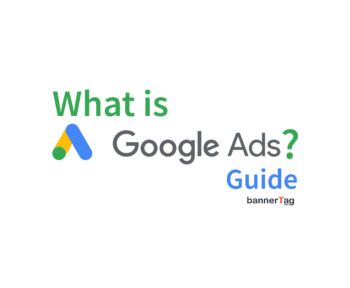Whether we are watching television or using social media, crossing a road, or listening to the radio, we get bombarded with advertisements every day. However, our brains retain only selected information. Brands, on the other hand, struggle to make their advertisements persuasive so they can be remembered for a long time.
Let us first see what an advertisement is?
Advertisement
Often known as an “ad,” advertisement is a marketing method used to influence the buying behavior and opinions of potential customers positively. This one-way communication tool is used to promote brands, products, or services. Advertisements are used globally to increase recall and recognition, whether, through telecom or print and online or offline mediums. Since a single message can deliver information to a huge audience, ads retain an important place in business marketing.
Difference between Marketing and Advertising
The two terms “marketing” and “advertising” are sometimes used interchangeably. However, both are different; advertisement comes under marketing, whereas marketing is much more. Marketing is an overarching promotional strategy that includes multiple aspects, such as pricing, promotion, and distribution. Advertisements make up a small part of the promotional strategy of a brand’s marketing strategy.
Now that we know the difference between marketing and advertising, let us now understand the key aims of advertisement:
Aims of Advertisement
The ultimate aim of every sort of advertisement is to influence the opinion of potential buyers. However, the approach used by different brands may differ. Some brands focus on prompt action of pushing the customers to make a purchase. However, others use a gradual approach to attract consumers. They try to influence prospects by creating brand awareness.
Some common approaches in advertisement include:
- Informing the target market about the latest offers, deals, and discounts.
- Building a particular image of the brand by relating the product with specific qualities.
- Standing apart from the competitors and giving a new offer in response.
- Making potential clients realize how the product satisfies their needs.
- Giving information for a social cause.
Advertisements works on a model that was introduced 100 years back. The model is influenced by the process of purchasing. Let us see what is inside this model:
AIDA Model of Advertisement
1. Awareness
Prospects know about their problems and possible solutions. Ads act as a way of creating awareness regarding a certain product. Thus, potential clients become aware of specific product availability.
2. Interest
Ads act as a way of piquing consumer interest to grab the target market’s attention. Therefore, ads must develop a target market’s interest in a product/service.
3. Desire
Creative advertisements create a desire for purchase. Though targeted customers already know about product specifications, certain tactics are used to influence the purchasing decision.
4. Action
Content and visuals of ads push prospects to take the intended action; that is, the purchase of a product or service.
The Two Ways of Advertising: Persuasive and Informative
Two different approaches can be adopted for advertisement; persuasive or informative. In a persuasive approach, steps are taken to persuade the customer’s preferences concerning taste, choice, and buying patterns. Advertisers use elements of pathos (emotion) and ethos (credibility) to influence consumer perception.
However, in an informative approach, ads focus on describing product features without taking any steps to change the customer’s values. Here, marketers use Lagos (logic) such as numbers, facts, and statistics to inform and convince users of their claim.
Classifications in Advertisement
Advertisements are of various types; from targeting mass media through television to flyer based marketing, several options are available. However, business nature, budget, and targeted customers are the key elements for considering the type of advertisement.
In this modern era, we are not limited to the most expensive type of advertisement through television. Though it reaches a wide group of audience, only a few of them turn into final consumers. Thus, it is neither targeted nor budget-friendly.
Here comes the option of Internet Marketing Services, where advertisements are a comparatively price-friendly and highly targeted. Let us see how many options in total we have in advertisements:
1. Print Media
Even after the rise of digital marketing, print advertisement has its own importance. Though the cost is higher and the approach is not perfectly targeted, this form of advertisement is still in use. Newspapers and magazines are the most popular form of print media; however, flyers, posters, brochures, wall chalking, and graffiti, etc. are also widely used.
In comparison to newspapers, magazines have a long shelf life. Whether we talk about restaurants and waiting for areas to offices and home, several months’ old magazines are in use. Besides this, they target a particular group of people like women’s magazines, business magazines, sports magazines, and so on.
2. Direct Mail
It refers to the distribution of leaflets, flyers, catalogs, brochures, etc. If the market is localized, direct mail ads can reap the best results. However, they can only deliver limited information.
3. Radio
Radio ads are more targeted in comparison to television. Though the drawback of visual absence is high, it can still work if done consistently. Targeting people from particular demographics is easier on the radio. For instance, music store product sellers can target people as per the radio channels.
4. Television
TV ads are expensive but highly engaging. They offer a mix of colors, content, sound, and visuals. Thus, the effect is long-lasting. Television ads are usually used in national campaigns.
5.Outdoor
Billboards, sponsored walls and buildings, and painted vehicles come under the domain of outdoor advertisement. Outdoors alone are not much efficient as they can only display limited content.
6. Online Advertisement
Since people are spending more time on the internet, digital advertisement seems mandatory in influencing targeted clients. Both small and large scale businesses are actively using online advertisement as per their budget, target market, and strategy.





